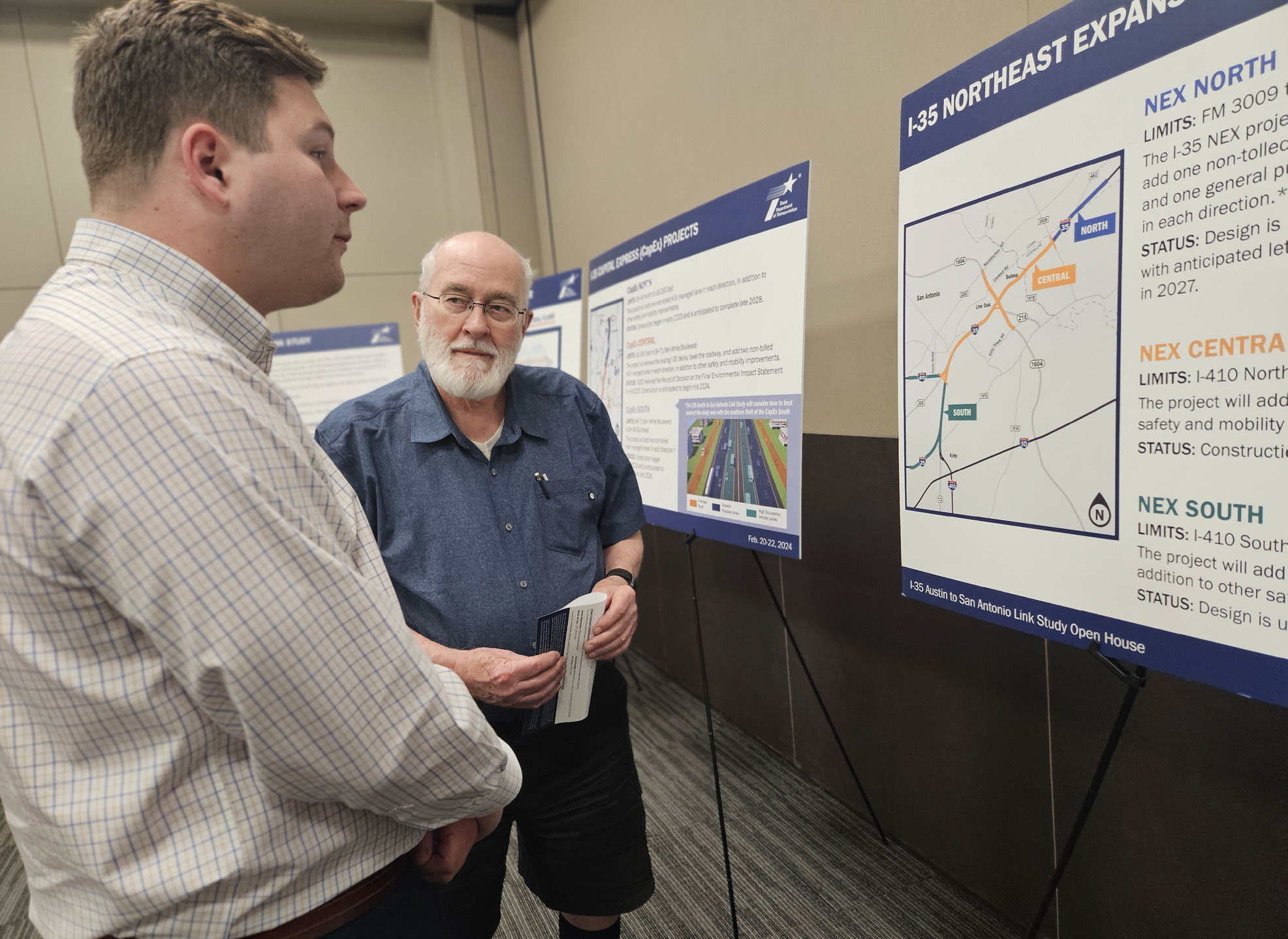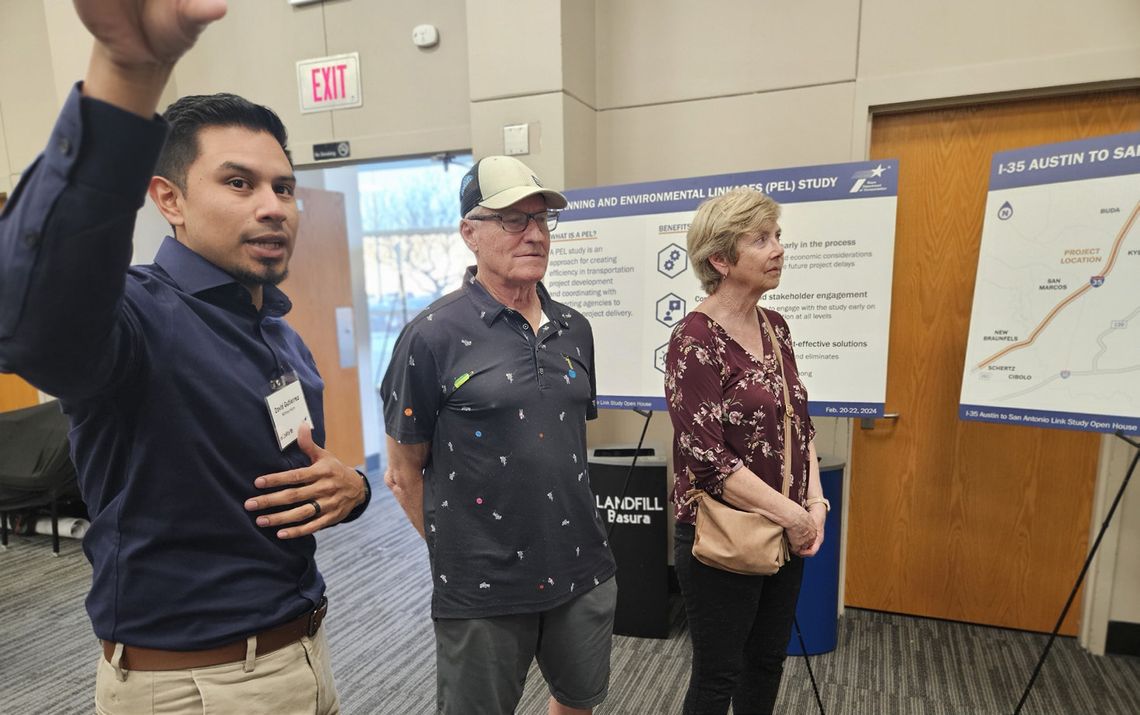TRANSPORTATION
The Texas Department of Public Safety is beginning the process of planning the future of Interstate 35 in San Marcos. The first step was bringing in the public last week for a meeting to hear about the potential options.
The study, called a Planning and Environmental Linkages study, reaches from the end of a project in south Austin and runs all the way to a different project in north San Antonio covering 46 miles along the interstate.
“Right now, they have HOV lanes on each end,” Ken McHenry, engineer with the consultant team working on the project for TxDOT, said, speaking of the projects on either side of the study. “So we're going to look at, does this segment require HOV lanes? We're going to look at alternatives as far as what type of lanes are going to go in there. Is it a general purpose lane or an HOV lane? Is one lane or two lanes needed going through there?”
While the solution is still up in the air, the problem is clear.
The population and employment in the study area are projected to increase 2.5 times the current level by 2050, according to TxDOT.
“As this entire corridor starts to grow in population, all of these cities are going to start connecting,” TxDOT Public Information Officer Antonio Luján said. “We're going to become this huge metropolitan area, and have to start finding ways to mitigate that congestion as we look forward into the future.”
This growth is going to cause an increase in congestion.
“Projected congestion will increase to failing levels by 2035 and continue to decline through 2050,” information provided by TxDOT at the meeting said. “If nothing is done, the existing corridor will limit mobility and freight movement within the region. Congestion will cause increased delays, travel times, density and worsened air quality.”
Interstate 35 in San Marcos was one of multiple areas along the route that were highlighted as “crash hot spots.”
“From Austin to San Antonio is a really intense stretch in terms of the number of crashes,” Luján said. “There's more than 10,000 crashes along that entire corridor [from 2019-2023], and it's 10% higher than the statewide average. So that's why I think it's important to start looking into the future on how to create a roadway that is more safe for commuters.”
Of those, 58 were fatal crashes resulting in 68 deaths. The top five factors for crashes were listed as failure to control speed, driver inattention, unsafe lane change, following too closely and faulty evasive action.
Those in attendance seemed to be in agreement. Something needs to be done.
“We need a lot of correction on this road, because there is already too much tie up,” Harry Ingham said. “I've had two trips to Austin this past week. Both of them took more than an hour to get from San Marcos into Austin. That's ridiculous.”
Ingham said he would like to see a rail system “that is frequent enough to make it worthwhile.”
San Marcos resident Karen Cornell thought so too.
“I really think that rail needs to be strongly considered so that people get out of their cars,” Cornell said. “And not just between where they are talking about, but extending all the way from Austin to San Antonio.”
In addition to the safety and traffic concerns, there were also some in attendance that were looking at the potential environmental impacts. David and Sally Durand moved from Houston to San Marcos. They are familiar with constant road construction, but also concerned about flooding. They attended to glean what information they could about any impact future construction could have on impervious cover and other flood related issues. Kyle City Councilmember Laura Lee Harris had similar questions.
“What we are seeing here are environmental constraints, or the topography constraints, which are important,” Harris said. “We’ve got a lot of spring crossings, and we’ve got Edwards Aquifer Recharge Zones. There is potential runoff. …. We have air pollution, light pollution, noise pollution and water pollution. All are big deals with a new development, although the highway is already there so you have that a little less. But, it goes through a lot of population.”
Even with the study starting now, the congestion issues are coming. With congestion projected to increase to “failing levels” by 2035, that is also about as early as any construction from this upcoming study would realistically begin.
“From something to reach construction, it is eight to 10 years from today,” McHenry said. “We are starting that process, because it takes so long. And this will be 46 miles, [8 to 10 years to start construction] may just be for the first segment. We know what’s going to happen. We know what’s on the horizon, so let’s get ahead of it as much as we can.”

Harry Ingham talks with Matthew Gall of TxDOT about the potential options for Interstate 35. Daily Record photo by Dalton Sweat



